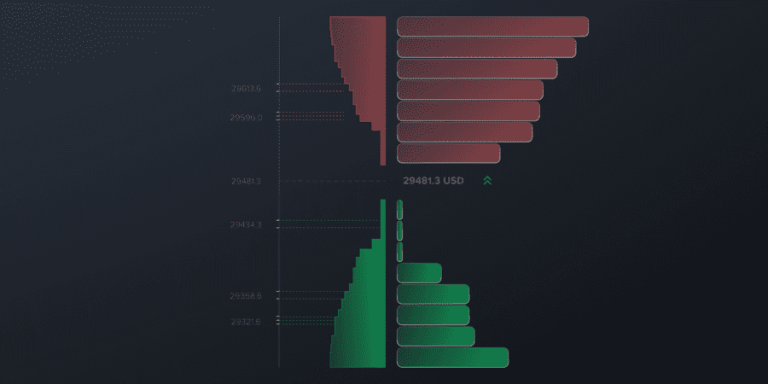
Dealing Desk vs No-Dealing Desk: What is The Difference?
Contents
Two brokerage types dominate Forex: no-dealing desk (NDD) and dealing desk (DD). For traders and anyone hoping to run their own brokerage, knowledge of these models is essential. In contrast to dealing desk brokers, who handle transactions internally and determine prices, no-dealing desk brokers link traders with external liquidity providers. This main difference affects the trading environment and operational dynamics of a brokerage greatly.
The Dealing Desk Model
Often described as a market maker, the Dealing Desk (DD) model is a major actor in the complex landscape of Forex brokerage. This model naturally influences the trading environment and approach for the brokerage as well as for its customers. Whether one is a broker or a trader, everyone thinking about entering this field must first understand its operating mechanics.
Operational Mechanics of the Dealing Desk Model
Trade Execution and Price Setting
At the core of the DD model’s functionality is its ability to act as the counterparty to client trades. This means when a trader decides to buy or sell, the DD brokerage often takes the opposite side of this transaction. This unique position grants DD brokers substantial discretion in setting bid and ask prices. Unlike prices directly mirrored from the interbank market, these can be slightly adjusted to suit the brokerage’s strategy. This capability to control trade execution not only helps manage the brokerage’s risk exposure but also allows for offering fixed spreads, a feature that can be particularly attractive to certain traders who prefer cost predictability.
You may also like

Risk Management in DD Brokerages
Managing risk is a nuanced and critical aspect of running a DD brokerage. The primary method involves either taking the opposite side of a client’s trade or offsetting it with another client’s counter trade. When there is no immediate internal match, the brokerage might resort to hedging in the open market. This strategy adds layers of complexity to the brokerage’s risk management but is crucial for maintaining balance and ensuring business continuity, especially in volatile market conditions.
Profit Generation Strategies
The crux of a DD brokerage’s profit generation lies in the spreads between the bid and ask prices. Additionally, there can be instances where the brokerage profits from trades that result in client losses. While this may seem straightforward, maintaining competitive spreads and ensuring client satisfaction and retention requires a delicate balance.
Pros and Cons for Brokerage Owners
When considering the DD brokerage model, aspiring brokerage owners must first grasp the numerous benefits and drawbacks of this method. This approach, based on the broker acting as a market maker, has unique prospects for income and control, but it also entails enormous obligations for ethical behavior, customer trust, and regulatory compliance.
Advantages of the DD Model
In the DD model, brokerage owners find unique profit opportunities through the flexibility of setting and adjusting spreads. This control is particularly advantageous in less volatile markets where brokers can secure higher profits through stable spread margins. However, even in more turbulent markets, this flexibility allows DD brokers to adapt quickly, potentially benefiting from increased trading volumes brought on by market swings.
Another key benefit is the degree of control that DD brokers have over their trading environments. Attracting traders that value consistency and dependability in their trading operations, they operate as market makers and provide a more predictable and stable environment. This control is about risk management as much as profit-related. DD brokers can mitigate adverse market movements by effectively managing the balance of trades within their books or opting for external hedging. Such capabilities are essential for sustaining client retention and building trust, as traders often seek a trading environment that offers stability and dependability.
Challenges of the DD Model
One of the most profound challenges for DD brokers lies in the ethical considerations of their operational model. The inherent conflict of interest, where a brokerage’s profits might sometimes align with client losses, demands a high ethical standard and transparent business practices. Maintaining a robust ethical framework is crucial to safeguarding client interests. This extends into relationship management, where establishing trust through transparency and clarity in trade execution and pricing strategies becomes a cornerstone for sustaining client relationships.
The success of a DD brokerage significantly hinges on its reputation for fairness and operational transparency. It’s imperative for DD brokers to communicate how trades are executed clearly and how prices are set, fostering an environment of trust and reliability. This covers addressing frequent industry-wide concerns related to pricing manipulation or trading against customers. Maintaining a respectable and trustworthy company image depends critically on showing transparency in operations, which also helps to establish a loyal clientele.
Moreover, regulatory compliance forms a critical aspect of the DD brokerage model. Following strict rules guarantees fair trading methods, which is not only a legal need but also a fundamental component in building Forex market trust. Maintaining a compliant and recognized company depends on keeping current with legislative changes and adjusting business procedures in line with them.
The No-Dealing Desk Model
With a clear trading environment and operating method, the No-Dealing Desk (NDD) concept marks a radical departure from the conventional Dealing Desk strategy. Aspiring brokers and traders must understand the subtleties of this model as it includes a spectrum of elements from market access to technology needs.
Understanding NDD Functionality
The NDD approach transforms from the traditional Dealing Desk model. Central to its functionality is providing traders with direct access to the interbank market, a vast network of banks and financial institutions that are the lifeblood of liquidity in Forex markets. This direct access significantly changes the trading landscape. Unlike the DD model, where the broker acts as a market maker, setting prices and managing trades, the NDD model sees the broker as a facilitator, connecting traders to a larger pool of liquidity providers. Here, the brokerage no longer stands as the intermediary in trade transactions but instead links traders to the dynamic and fluid world of the interbank market.
In the NDD setup, price determination shifts from the brokerage to the interbank market. Many financial organizations now shape prices, which reflect the state of the market rather than being established by a single organization. This configuration gives traders a more direct and open view into the Forex market, therefore reflecting the natural movements and rhythms of the market.
You may also like

Transparency and Market Influence
A key characteristic of the NDD model is its heightened level of transparency. In this environment, price movements and spreads are a direct result of market dynamics, not shaped or manipulated by a broker. This openness is critical in attracting traders who desire a trading experience that is consistent with the basic principles of supply and demand. The competitive nature of the interbank market often results in narrower spreads and more advantageous pricing for traders, increasing their potential for profitability.
DMA
Direct market access is another cornerstone of the NDD model, allowing traders to benefit from the best available prices in real time. As trades are executed against quotes from various liquidity providers, traders are exposed to diverse prices, often leading to more advantageous trading conditions. Moreover, the NDD model is known for its rapid order execution. With orders directly placed into the system of liquidity providers, execution speeds are generally faster than those found in the DD model. This swiftness is particularly beneficial for specific trading strategies that rely on quick market entries and exits, such as scalping or high-frequency trading.
Risk Management in NDD Brokerages
A pillar for NDD brokerages, good risk management guarantees regulatory compliance and long-term viability. NDD brokers communicate most transactions straight to liquidity providers, so their main risk management approach is to carefully select and manage these providers so that they can regularly provide competitive rates and carry out efficient trades.
Hedging is another vital tool in the NDD broker’s risk management arsenal. Strategic hedging can mitigate risk in situations of significant exposure – be it due to market volatility or unbalanced client positions. This approach protects the brokerage’s capital and can be a subtle form of profit generation, especially when executed with market acumen. Therefore, while the NDD model’s revenue streams are largely transparent and straightforward, maintaining profitability also hinges on the brokerage’s ability to adeptly navigate the market risks and operational challenges inherent in this model.
Profit Generation Strategies
In the NDD brokerage model, revenue generation is intricately tied to its core operational principles. Unlike DD brokers, who earn primarily from spreads, NDD brokers typically generate income through commission fees. These commissions are usually transparent, fixed charges per trade or a percentage of the trade volume, creating a clear and direct revenue stream that scales with client trading activity.
Additionally, NDD brokers can negotiate beneficial terms with multiple liquidity providers, leveraging their trade volume to secure more favorable rates, indirectly enhancing profitability. Beyond transaction-based revenues, NDD brokerages can diversify their income by offering value-added services such as advanced trading platforms, in-depth market analysis, and educational resources. These services, particularly premium versions, provide additional income streams and help cultivate long-term client relationships by offering more than just a trading platform.
Pros and Cons for Aspiring Brokers
Advantages of Starting an NDD Brokerage
Aspiring brokers considering the NDD model will find its strengths in its inherent transparency and market-driven approach.
The degree of openness of the NDD model is among its most important benefits. The possible conflict of interest in the DD model is much reduced as the market directly affects the pricing and is not under control of the broker. Developing trust with customers depends much on being transparent. In a market where trader trust is critical, the capacity to provide a trading environment free from broker manipulation may differentiate a NND brokerage and strengthen long-lasting customer relationships.
The ability of NND brokerages to provide competitive, market-driven pricing makes them unique. For seasoned traders who are always looking for the ideal trading conditions specifically, this is a major selling point. In a very competitive market, the NND model may be rather appealing as it directly taps into the interbank market and frequently offers traders narrower spreads and more advantageous pricing.
Challenges in Running an NDD Brokerage
However, the NDD model also comes with its challenges, particularly concerning technological requirements and managing variable spreads.
One of the primary challenges in establishing an NDD brokerage is the need for a robust and sophisticated technological infrastructure. This technology is vital to facilitate real-time connectivity with many liquidity providers. Maintaining the fast execution speed characteristic of the NDD model and guaranteeing traders have continuous access to the best available prices depend on a dependable and effective system. Investing in technology calls for constant maintenance and upgrades to keep current with market and technical developments; it is not just a one-time set-up.
NND brokers deal with variable spreads that change with market circumstances, unlike the DD model wherein brokers may provide stable spreads. Particularly in times of great market volatility, the resulting uncertainty might be difficult to control. Brokers must find a balance between providing attractive spreads to draw in business and making sure these spreads are sustainable for the brokerage’s profitability. Good control of variable spreads calls both a thorough awareness of market dynamics and the flexibility to adapt to fast changes in market circumstances.
Conclusion
It is advantageous for both current and prospective brokerage proprietors and merchants to understand the distinctions between the Dealing Desk and No-Dealing Desk models. The decision is influenced by a multitude of factors, such as strategic objectives, consumer requirements, and market positioning, as each model has its own advantages and disadvantages. Aligning the brokerage model with these elements helps one to create a profitable and respectable trading platform. In the fast-paced world of Forex trading, an educated choice in this sense is the first step towards possible success for both traders and aspirant brokers.
Updated:
December 18, 2024
8 January, 2026
Stock Market Hours: When Does The Market Open?
Most major stock markets are open Monday to Friday, with opening times depending on the exchange and its time zone. For example, US stock markets open at 9:30 AM ET, while the London Stock Exchange opens at 8:00 AM UK time. There is no regular stock trading on weekends. Below, you’ll find a clear, practical […]



